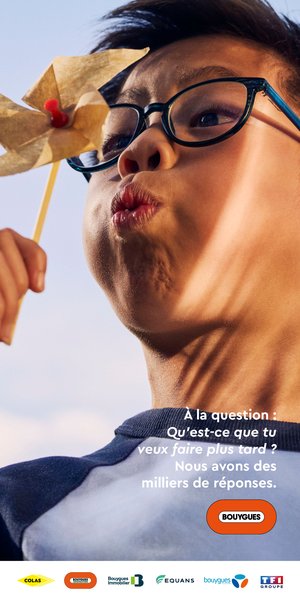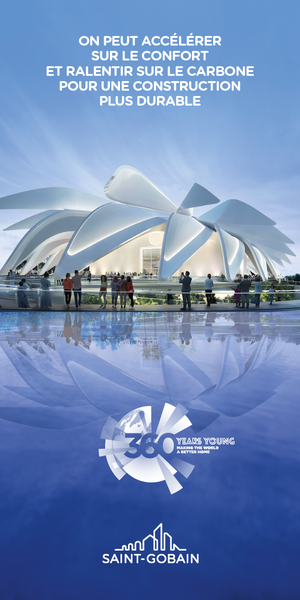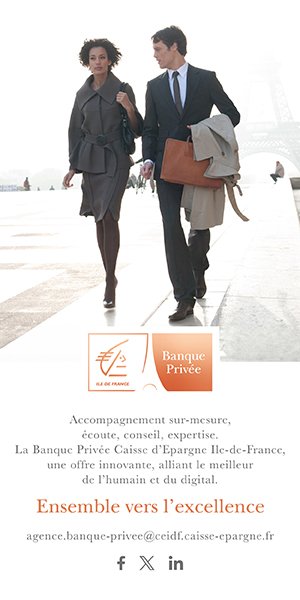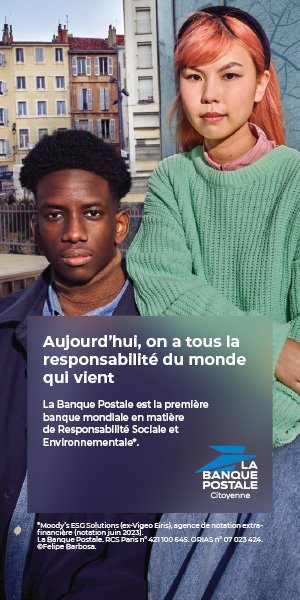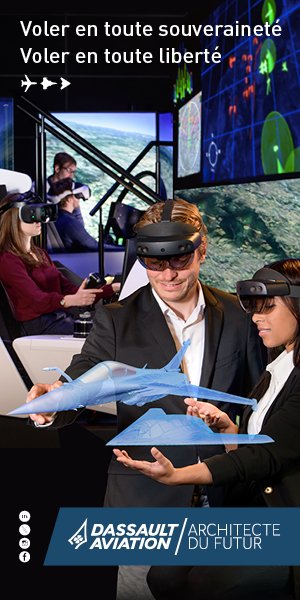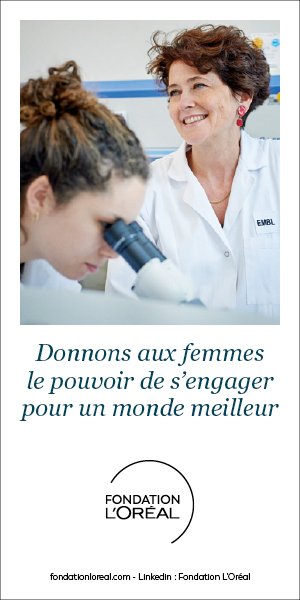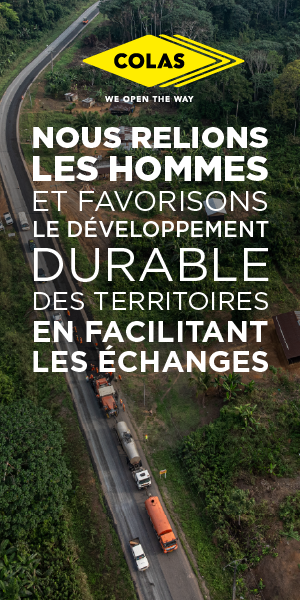Politique Internationale — What was most risky about the Paris 2024 Paralympic Games? Not reaping this harvest of medals?
Marie-Amélie Le Fur — These Games have been extraordinary. In purely sporting terms, the French Paralympic team’s objective was to be among the top 8 nations. Mission accomplished, with 75 medals, including 19 golds, in its trophy cabinet. It had been twenty years since France had been in the top 10. What’s more, we performed well in many disciplines, 15 different ones, which is a unique feature of the French model and one of its strong points. This does not, of course, prevent us from having a few regrets: some athletes fell a little short of the results we had hoped for; moreover, only 16% of our medals went to women. If we are ever to break into the top 5 – our stated goal – there is room for improvement: the nations ahead of us have more than 30% of women medallists. We also need to strengthen our presence in the sports that represent the Paralympic model, namely swimming, athletics and table tennis.
P. I. — Preparing, aligning and performing: how can you give yourself the best chance of overcoming the obstacles?
M.-A. L. F. — The results achieved by the athletes in 2023 and 2024, at the world championships, confirmed this ambition. There was real confidence because we had substantial resources at our disposal. For the French Paralympic team, the preparations for Paris 2024 were supported by a fourfold increase in the state budget. The public authorities, as well as the private sector, have all contributed to this effort. Whether in terms of coaching, infrastructure provision, training conditions or day-to-day support for athletes, a significant step has been taken in the professionalisation of the model. We needed this commitment: the precariousness of top-level athletes is a real issue, and providing them with a social and professional base is always a priority.
P. I. — Are new working methods being developed in sport to leave as little to chance as possible?
M.-A. L. F. — A number of factors made these Games unique for the French Paralympic team. First of all, our ambition was to have a denser team, present in all 22 sports on the Paralympic programme. This required a strong commitment from the CPSF and the Paralympic federations to identify new talent and make them competitive by 2024. We also wanted to strengthen the delegation’s overall competitiveness and maximise the advantage of hosting the Games at home. To do this, we explored new ways of working. In a nutshell, it was a matter of bringing all those involved as close together as possible and working together. We also set ourselves the goal of raising the profile of the French team and increasing media coverage. By initiating the ‘united French team’ and raising media awareness of the specificities of parasport, we wanted parasport to enter the hearts of the French people, so that they would be carried away by the emotions.
P. I. — Was the popularity of the Paralympics predictable? Did you have any concerns?
M.-A. L. F. — It was clearly our aim to create this kind of momentum. The fervour we’ve seen is the result of a number of factors. The majesty of the competition venues was obviously one. Another was the ability to accommodate the public, with affordable ticket prices. Not to mention the desire of the local authorities as a whole to promote Paralympic athletes. Finally, although the list is not exhaustive, the media coverage lived up to its promises, led by France Télévisions. The quality of the images is one thing, the impact of the words another. The commentators – TV, radio, written press, etc. – got the right messages across: by this I mean that the Paralympics were covered first and foremost from a sporting angle, without pathos, without shortcuts, without the idea of necessarily telling stories, but rather focusing on the performance, with the right vocabulary. In short, during the Paris 2024 Paralympic Games, we talked first and foremost about sport!
P. I. — How can we capitalise on this recent past to advance the cause of parasport? Isn’t there a risk of the momentum fading?
M.-A. L. F. — The aim is to ensure that our ambition continues: to see parasport as an important vector for inclusion, emancipation and health, and to maintain the cross-disciplinary commitment of all those involved (whether through finance, sport, the voluntary sector, local authorities, health care, etc.). Sport must become a major element in the life course of people with disabilities. Among the most emblematic initiatives is the strengthening of ‘inclusive clubs’, deployed by the CPSF with financial support from the Ministry of Sport and Local Authorities. These clubs receive awareness training to help them welcome and supervise parasport participants. By the end of 2024, an additional 1,700 clubs throughout France will have been awarded the label. And the figure of 3,000 is expected by the end of next season. Clearly, Paris 2024 is giving leverage to this process: gradually, we will succeed in covering the entire country. Let’s not forget that we have a long way to go: at present, less than 2% of sports facilities are able to offer satisfactory conditions of accessibility for disabled people. Against a backdrop of saturation at a large number of facilities, whose access slots cannot be extended indefinitely.
P. I. — Do you feel that parasport has earned its place in our society?
M.-A. L. F. — Nothing can be taken for granted, especially today when budget cuts threaten a large number of activities. Sport has to fight not to be relegated to the background. One interesting aspect, which Paris 2024 is promoting, is the gradual breaking down of barriers. Segmentation is tending to diminish: public policies are being considered across the board, networks are being set up and transmission belts are being activated. The challenges of parasport are better understood by those involved and appropriate responses are being deployed throughout the country. Take the case of companies that partner top-level athletes: they take the same care of the athletes concerned, whether they are taking part in the Olympic or Paralympic Games.
P. I. — Do you put yourself at risk when you play sport at a high level? And even more so if you’re disabled?
M.-A. L. F. — Top-level sport is a high-precision mechanism that requires the optimisation of every detail of preparation. In this quest, any top-level athlete, if not properly supervised, can put his or her physical integrity at risk. Over and above the physical challenges, the psychological aspect and mental well-being in general are just as crucial. The burn-out phenomenon observed in elite practice is no exception. As an institution, our role is to support respect for the whole person by developing appropriate programmes and systems that take account of the unique nature of parasport and parasport practitioners. Whether it’s doping, mental health or the fight against sexist behaviour or sexual assault, we have a duty to act. This year, for the first time in the history of the Paralympics, a person dedicated to matters of mental health and well-being was able to accompany the French team throughout the competition. This is by no means a luxury: at times like these, when the pressure on athletes and their support staff is at its highest, it is essential to have the tools and systems in place to alleviate this pressure. Is this a guarantee against the slightest failure? No. Not all athletes are equally comfortable with this psychological approach. It’s interesting to see how skills can be developed: during my career (1), while medical monitoring was already well developed, mental support was virtually non- existent, as was the prevention of violence.
P. I. — Is there any country in particular whose parasport policy is particularly inspiring?
M.-A. L. F. — It depends what we’re talking about. Access to sport for as many people as possible or elite sport? In the first case, the Nordic countries show the way forward; the question of inclusion doesn’t really arise there because disabled people are fully integrated into the life of the city, with needs taken into account immediately and facilities designed with accessibility in mind. As far as high-level sport is concerned, the English have a proven track record: in many disciplines, their delegations are always top performers; they have this culture of competition and winning, and know how to use the right ingredients. Generally speaking, a country will be all the more inspiring if it succeeds in breaking down barriers. I’m not just talking about sport: in a city, when it comes to mobility, habits and everyday practices, everyone needs to be on the same footing if they are to live with the fewest difficulties.
P. I. — What does it mean for a disabled person to be able to take part in a sporting activity?
M.-A. L. F. — Sport opens a world of possibilities: understanding oneself and opening up to others. For many disabled people, it opens new horizons, provides opportunities to meet new people and strengthens social ties. The challenge is to act on supply and demand together. The aim is to make sport an integral part of people’s lives, by working with key players – doctors, teachers, the Departmental Office for the Disabled (MDPH), etc. – while developing the widest possible range of sports facilities close to where they live. To achieve this, the range of sports on offer needs to be strengthened and made more visible and easier for practitioners to understand.
P. I. — Have you personally experienced this field of possibilities you mention?
M.-A. L. F. — Sport was an obvious choice for me. As it happens, a year before my accident, I attended an athletics competition at the Stade de France, where I was impressed by all those sprinters with their blades on their feet. I was convinced that sport could do me good. In my case, the people around me were also crucial. My family, of course, but also the fire brigade, which I would have liked to have joined: they all encouraged me to take up sport again and then to practise at a high level. And let’s not forget my partners: practising at an elite level represents a financial investment. In my case, I had to finance a racing blade and I received help to do that.
P. I. — Will we one day see the Olympic and Paralympic Games organised jointly rather than in succession?
M.-A. L. F. — This question is asked regularly. Joint organisation is difficult, if only in terms of infrastructure management. There are so many events on both sides that this expansion would be difficult to organise. On the other hand, in the context of a world championship or a European championship dedicated to a single discipline, pooling approaches is a good thing. In fact, it has already been orchestrated, but it can still be strengthened. For the Games, in light of what Paris 2024 has achieved, the prospects are to bring these two universes together through symbols and powerful moments while preserving their diversity.
(1) Marie-Amélie Le Fur won medals at the Paralympics Games in Beijing in 2008, London in 2012 and Rio in 2016.



